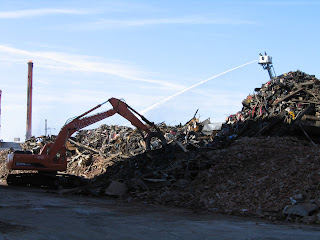There has been a lot written about the
Ebola viruses and the disease that it causes. It is important to be well informed so that you can better know what is accurate information and what is misinformation. In the old days, the main sources of information was television news, newspapers, or libraries. Today, there is no excuse for succumbing to fear when accurate information is only a few clicks away. There are several websites that will provide you with accurate information regarding ebola hemorrhagic fever which is caused by several strains of viruses in the
Ebolavirus genus. As a Council-certified Indoor Environmental Consultant one of our first resource website would be the
Occupational Safety and Health Administration's (OSHA)
Ebola website. Here you will find information regarding the virus its background information, hazard recognition, medical information, Standards, control & prevention, and additional resources. The standards section details the regulations OSHA expects employers, whose employees are at risk of being exposed to ebola, to comply with. Obviously, the
bloodborne pathogen (1910.1030); the respirator (1910.134); and the
personal protective equipment (PPE) standards must be complied with in addition to the "
general duty clause". When cleaning and disinfecting, the hazard communication (1910.1200) and Sanitation (1910.141) standards would also have to be complied with.
 |
| English: Ebola virus virion. Created by CDC microbiologist Cynthia Goldsmith, this colorized transmission electron micrograph (TEM) revealed some of the ultrastructural morphology displayed by an Ebola virus virion. (Photo credit: Wikipedia) |
Unfortunately, it is obvious mistakes were made, in
Texas & by others, in the selection and wearing the safety equipment necessary to protect the health care workers from being exposed to the Ebola Virus. The
Centers for Disease Control (CDC) is the agency that develops these protocols and provides information and assistance in helping healthcare workers,
click here for their Ebola website. Their website has a
PPE training program to train you on donning (putting on PPE) and doffing (taking off PPE) the proper safety equipment. These procedures are designed to ensure you do not contaminate yourself or others, When properly followed the procedures should reduce the risk of the worker and others being exposed to the Ebola virus. In addition, the CDC has posted "Advice for Colleges, Universities, and Students about Ebola in West Africa" which provides guidance on study abroad and foreign exchange.
 |
| None - This image is in the public domain and thus free of any copyright restrictions. As a matter of courtesy we request that the content provider be credited and notified in any public or private usage of this image. (Photo credit: Wikipedia) |
New York State's Department of Health has an
Ebola website, too. This website provides information for the public,
health care providers, hospitals, & EMS providers. Information for the public includes "School Guidance on the Ebola Outbreak", which advises the health personnel for schools to stay informed about the current situation and have access to up-to-date, reliable information as events unfold.
As you can see there are plenty of websites and sources of information regarding Ebola and that's just the US websites. Another excellent website is the
World Health Organization's (WHO)
Ebola website. Their website also includes information on PPE, travel advice, fact sheets, and discussion of trials and production of ebola vaccine. So don't allow fear to ruin your day, get the information you need to help you move forward, As
Franklin Delano Roosevelt said "The only thing we have to fear is fear it'self - nameless, unreasoning, unjustified, terror, which paralyzes needed efforts to convert retreat into advance." So lets move forward!
























